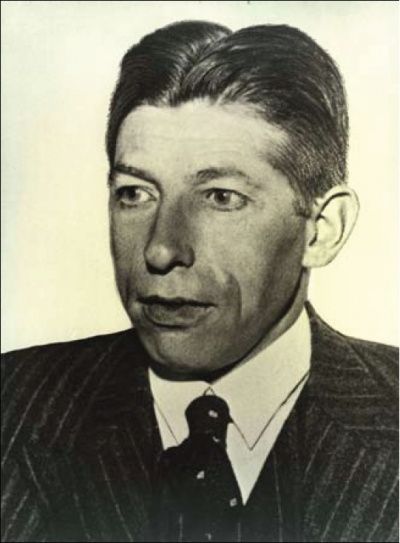WWII: Lancaster en Burg. Wijtvliet monument | De Rips
Contact
Burg. Wijtvlietlaan
5764 PD De Rips Plan your route to WWII: Lancaster en Burg. Wijtvliet monument | De Rips
Contents
1 Lancaster and Burg. Wijtvliet monument
2 This gunner did not want to lie down
3 WIM G.C.F. WIJTVLIET
4 Shadow airfield B84 De Rips. (De Sijp-Elsendorp)
5 Murder on Airfield B84 De Rips.
6 The Canadian 126 WING had a short but successful stay there with their Spitfires.
Lancaster and Burg. Wijtvliet monument
During World War II, a Lancaster bomber of the British Air Force crashed in Rips on Feb. 21, 1945. The crash killed seven of the eight crew members. This monument also pays attention to the memory of Mayor Wim Wijtvliet who paid for his life with death in the Buchenwald concentration camp where he was murdered. The adjacent street is named after him in honor of our freedom. There is also a "Google" overview map with all 27 plane crashes/emergency landings in the Municipality of Gemert-Bakel during WWII.
Lancas…
Contents
1 Lancaster and Burg. Wijtvliet monument
2 This gunner did not want to lie down
3 WIM G.C.F. WIJTVLIET
4 Shadow airfield B84 De Rips. (De Sijp-Elsendorp)
5 Murder on Airfield B84 De Rips.
6 The Canadian 126 WING had a short but successful stay there with their Spitfires.
Lancaster and Burg. Wijtvliet monument
During World War II, a Lancaster bomber of the British Air Force crashed in Rips on Feb. 21, 1945. The crash killed seven of the eight crew members. This monument also pays attention to the memory of Mayor Wim Wijtvliet who paid for his life with death in the Buchenwald concentration camp where he was murdered. The adjacent street is named after him in honor of our freedom. There is also a "Google" overview map with all 27 plane crashes/emergency landings in the Municipality of Gemert-Bakel during WWII.
Lancaster and Burg. Wijtvliet monument at the Burgemeester Wijtvlietlaan.
(Below is a summary of the crash report from a 1989 Australian newspaper by the sole survivor Eddie Hansen).
This gunner didn't want to lie down
The mighty Lancaster bombers are a piece of W.W II history. Veteran tail gunner Eddie Hansen flew Lancasters and tells Frazer Guild why he wants one of the few left here to be kept in WA. At 12,000 feet (4000 meters) above dark Europe, Perth man Eddie Hansen's life was forever changed. The Lancaster tail gunner was on his 54th operational wartime flight and his luck had already lasted longer than was normal for someone from a bomber crew constantly pursued by Luftwaffe night fighters. With a three-quarter moonlight, the four-engine bomber was a near-perfect target, and the "skipper" Group Captain Evans-Evans had the plane turned back and forth so they could still keep an eye on the blind spot below. The specially assembled crew was satisfied with their Path Finder mission to the Mittelland Canal near Gravenhorst. The Path Finders' job was to mark the target for their next bombers and although they were already on their way home they knew they were still very vulnerable to the German aces that had already killed thousands of Lancaster crewsMr. Hansen could see the activity of the fighters and the occasional fireball that appeared when another Lancaster was hit. He had a hunch that something somewhere was flying around them and asked the Skipper to continue turning the aircraft back and forth so they could search further. After they started flying a left turn straight ahead, Mr. Hansen saw a blinding flash of burning gasoline. This was immediately followed by intense heat and orange light streamed past the rear turret. The plane was on fire and I said this over the intercom, "Skipper, we've been hit. Evans-Evans replied, "I know," and immediately after this he yelled at us to jump out. 'Fire rushed past me and then I saw part of the left wing break off and the Lancaster went into a spinning flight pinning everyone into the fuselage because of the centrifugal force.' Because of this danger, Mr. Hansen had insisted on getting a parachute of the type used by pilots instead of one that had to be hung in the fuselage next to the turret. As the aircraft descended, he tugged on the cable that opened the dome's double sliding door and pressed his rear into the slipstream. Then he pulled the parachute cord, risking it catching fire from the flames flowing along the fuselage from the front. The parachute opened and he exited the plane like a cork from a champagne bottle. The back of his head hit the top of the dome and he was unconscious. I vaguely remember coming to, hanging under the parachute and seeing a fire below me on the ground. I thought I was going to land on the plane and then became unconscious for the second time. He came to in a plowed field. His head and chest hurt and he had sprained both ankles. His seven colleagues were dead in the burning plane, 300 meters

